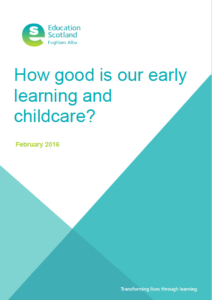QI 1.3 p21
Quality illustrations
Children are meaningfully and actively involved in leading their play and learning through a balance of spontaneous and planned high quality experiences that promote children’s choice and independence. Well considered innovations and creative approaches successfully engage children’s imagination and enrich their play and learning. Play experiences develop skills in language, literacy and numeracy.
p22
Planning approaches are child centred and responsive to children’s interests and life experiences. As a result, children are progressing well, and are happy and confident.
Children’s opportunities for play and learning are enhanced through strong connections to their own and wider communities.
High quality play and learning experiences support the emotional resilience of children and families through holistic and nurturing approaches to secure children’s wellbeing including the right to play.
High quality observations and skilled interactions promote children’s creativity and curiosity. Effective use of questioning, extends children’s thinking, widens their skills, and consolidates their learning through play.
Children make informed choices about leading their play and learning within a stimulating, challenging, creative setting. Through careful observations and effective assessment of information, progress and achievements are recognised and enhanced. Any additional supports are identified, planned for, and implemented. This highly responsive approach ensures children are developing a broad range of lifelong learning skills.
p24
Challenge questions
How are we using national and current best practice to plan children’s play and learning experiences?
How well do we support and encourage children’s natural curiosity in our setting?
What approaches are we using to promote children’s developing language, numeracy and literacy skills?
How effective are our processes to track children’s development, progress and achievements?
How well are we involving children in identifying and assessing their learning and progress?


